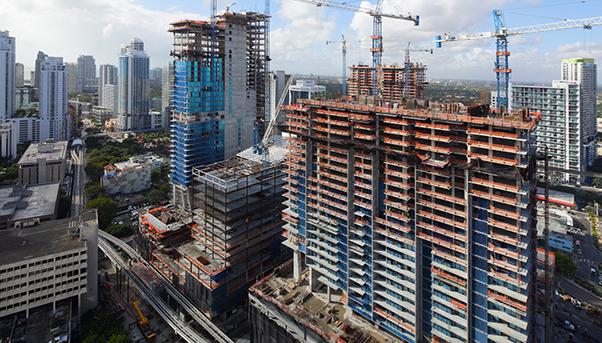Nouriel Roubini, the New York University professor who became famous for having been one of the few economists to have foreseen the 2008 crisis by warning about a financial bubble that was about to burst, is moderately optimistic about 2016 “as long as there are no new horrendous acts of terrorism to depress again the spirits of citizens, whether European or American”.
What will be the trend for the U.S. economy in 2016?
“A big contribution could come from the big infrastructure plan that President Obama is launching in the next few weeks and that will last beyond his mandate. The plan will lend very important support to investment and employment and resolve some long-standing problems connected to the poor state of repair of many roads, bridges, overpasses and dams.”
What’s does the plan consist of?
“Under the program launched by the president of the United States, as of this year and for the next six years, they will invest $478 billion to modernize highways, bridges and the American transport system in general. This investment program is in addition to the $301 billion budget made available by the White House in 2015 for improving the country’s infrastructure system.”

Brickell City, Miami, Florida
What impact will the plan have on the U.S. economy?
“The biggest impact will surely be on the labor market. The plan will guarantee the creation of thousands of jobs for workers, engineers and architects who will contribute to reducing even more the low unemployment rate. What’s more, this public spending will encourage more investment by the private sector, bringing life to what has been called Rebuild America Partnership.”
Will private companies gain from this public spending?
“Companies have started to invest with conviction again also thanks to low energy costs. Oil has now fallen everywhere in the world, and many producers of shale oil have gone into crisis but for many years it wasn’t the case and American companies have taken a big advantage of the fact of having low energy costs. Alongside this is the solidity of the financial system. It’s much more stable now thanks to various regulatory measures and controls introduced after the 2008 crisis. And internal consumption has also finally recovered. All of this makes us reasonably optimistic about 2016 from the point of view of the market as well as the real economy.”
In the United States, most of the attention seems to be on the Federal Reserve, which for the first time in 10 years has started raising rates.
“It doesn’t seem to me to be a big danger to an economy. It’s turning around and it’s been strong and solid for a number of years. Today it’s finally going ahead at its full
potential, at 2.5% to 3% for 2016, a slight rise from 2015. There’s been a big change since the spring of 2013 when, for the first time, news broke in the markets about tapering by the Federal Reserve, which intended to shut down quantitative easing and increase rates at the same time. When it happened, the announcement took everyone by surprise and caused a small market crash. But its repercussions were most felt in emerging markets, which began their long march downward. And it’s still continuing. The dollar’s rise, which was provoked by those two pieces of news from the Fed and continues to this day, is good news for Europeans but it’s proving to be disastrous for emerging economies because their budgets are based on debt in dollars.”
But the rise in rates will not have an effect on all of this?
“No because, contrary to what happened in 2013, markets had time to prepare for it and had discounted the hike, which was overdue because rates couldn’t stay near zero forever. In any event, it’s a small move: after 0.25% in December, there should be two more identical moves in April and September in 2016. As you can see, it will be a very gradual and planned increase that will not have an effect on the market.”

Wall Street
But what is it that got Yellen to finally stop delaying and go ahead with the hike?
“As you know, the Fed has a double mandate: to monitor inflation and follow the trend in employment. And Janet Yellen is especially sensitive to this last point. The 211,000 jobs that were created in November were enough to convince her. The job market is working as it should, the unemployment rate – at a little more than 5% (half what is in Europe) – is practically at the physiological level of full employment. So there’s no reason not to raise rates. It’s worth considering that some say that real unemployment is higher because statistics don’t consider how many people have stopped looking for work. There are also those who argue that productivity has become so low that it has become necessary to hire in order to produce the same amount of goods. These are all inexact comments.”
But inflation has yet to reach the forecast 2%.
“You have to look at the multi-year trend. Let’s say that in five years – a reasonable period – the target will be reached. Europe is a lot further behind and a solution to the problem of deflation is still far off.”

